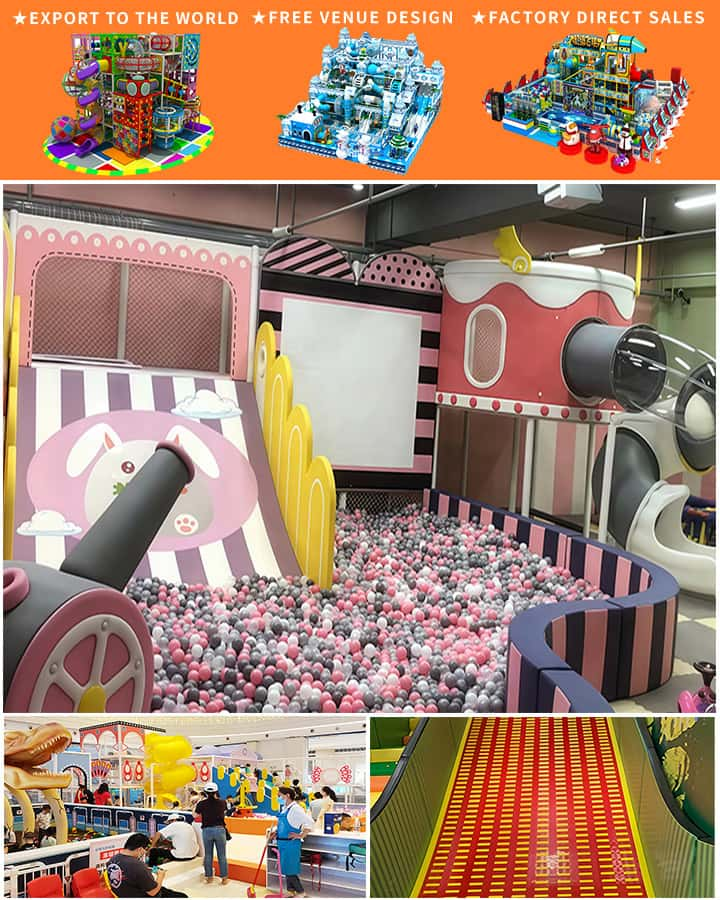Starting an indoor playground can be a rewarding venture, combining the joy of children’s laughter with the potential for a lucrative business. However, like any entrepreneurial endeavor, it requires thorough understanding and planning. One burning question that many prospective owners have is: how much do indoor playground owners make? This article aims to shed light on the financial aspects of running an indoor playground, offering insights into revenue streams, operational costs, profitability, and tips for maximizing earnings.
Revenue Streams
Indoor playgrounds typically generate income from multiple sources:
Admission Fees: The primary source of income is usually the admission fees paid by children and their accompanying adults or guardians. Rates can vary widely depending on the location, the size of the facility, the range of attractions, and local economic conditions. On average, admission fees might range from \(5 to \)20 per child for a few hours of play.
Parties and Events: Hosting birthday parties, family gatherings, or corporate team-building events can significantly boost revenue. These events often come with higher per-person charges and may require additional services like catering or party hosting, which can further increase earnings.
Membership Programs: Offering monthly or yearly memberships can provide a steady stream of income and foster customer loyalty. Membership rates might range from \(30 to \)100 per month, depending on the benefits included.
Additional Services: Some indoor playgrounds also offer add-on services such as face painting, workshops, or merchandise sales. While these may not be significant revenue drivers individually, they contribute to the overall profitability.
Operational Costs

To calculate net earnings, it’s crucial to consider the operational expenses involved in running an indoor playground. Major cost components include:
Rent/Lease: Depending on the location and size of the facility, leasing costs can constitute a substantial portion of monthly expenditures. Prime locations with high footfall might have higher rent but could also attract more customers.
Utilities: Electricity, water, heating, and cooling are ongoing expenses. Energy-efficient appliances and lighting can help manage these costs.
Staff Salaries: Adequate staffing is essential for safety and customer service. Wages for attendants, managers, and maintenance crew members need to be factored in.
Maintenance and Upkeep: Regular maintenance of equipment, cleaning supplies, and occasional repairs are necessary to ensure a safe and enjoyable environment for visitors.
Insurance: Liability insurance is crucial for protecting against accidents or injuries that may occur on the premises.
Marketing and Advertising: Promoting your indoor playground through various channels helps attract new customers and retain existing ones.
Profitability and Financial Projections
The profitability of an indoor playground largely depends on its ability to balance revenue and expenses effectively. A well-run facility in a good location can expect to break even within the first year or two and start generating profits thereafter. According to industry reports, successful indoor playgrounds can achieve annual revenues ranging from several hundred thousand to over a million dollars, with net profits potentially reaching tens of thousands to hundreds of thousands annually after accounting for all expenses.
However, it’s important to note that these figures are highly variable and depend on numerous factors, including market demand, competition, operational efficiency, and the owner’s business acumen.
Tips for Maximizing Earnings
To enhance profitability, indoor playground owners should consider implementing the following strategies:
- Diversify Income Streams: Apart from admission fees, focus on increasing revenue from parties, events, memberships, and additional services.
- Optimize Operations: Streamline processes to minimize waste, negotiate favorable terms with suppliers, and invest in energy-efficient equipment to reduce utility bills.
- Enhance Customer Experience: Regularly update and maintain equipment, ensure cleanliness and safety standards are met, and create engaging themes to keep visitors coming back.
- Market Aggressively: Utilize social media, local advertising, partnerships with schools or community groups, and special promotions to attract new customers and retain existing ones.
- Analyze and Adapt: Regularly review financial performance, customer feedback, and market trends to make informed decisions about pricing, services offered, and future investments.
In conclusion, while there is no one-size-fits-all answer to how much indoor playground owners make, understanding the key revenue streams, managing operational costs effectively, and adopting strategies for growth can pave the way for a profitable venture. With careful planning and execution, owning an indoor playground can not only bring personal satisfaction but also yield a substantial return on investment.




